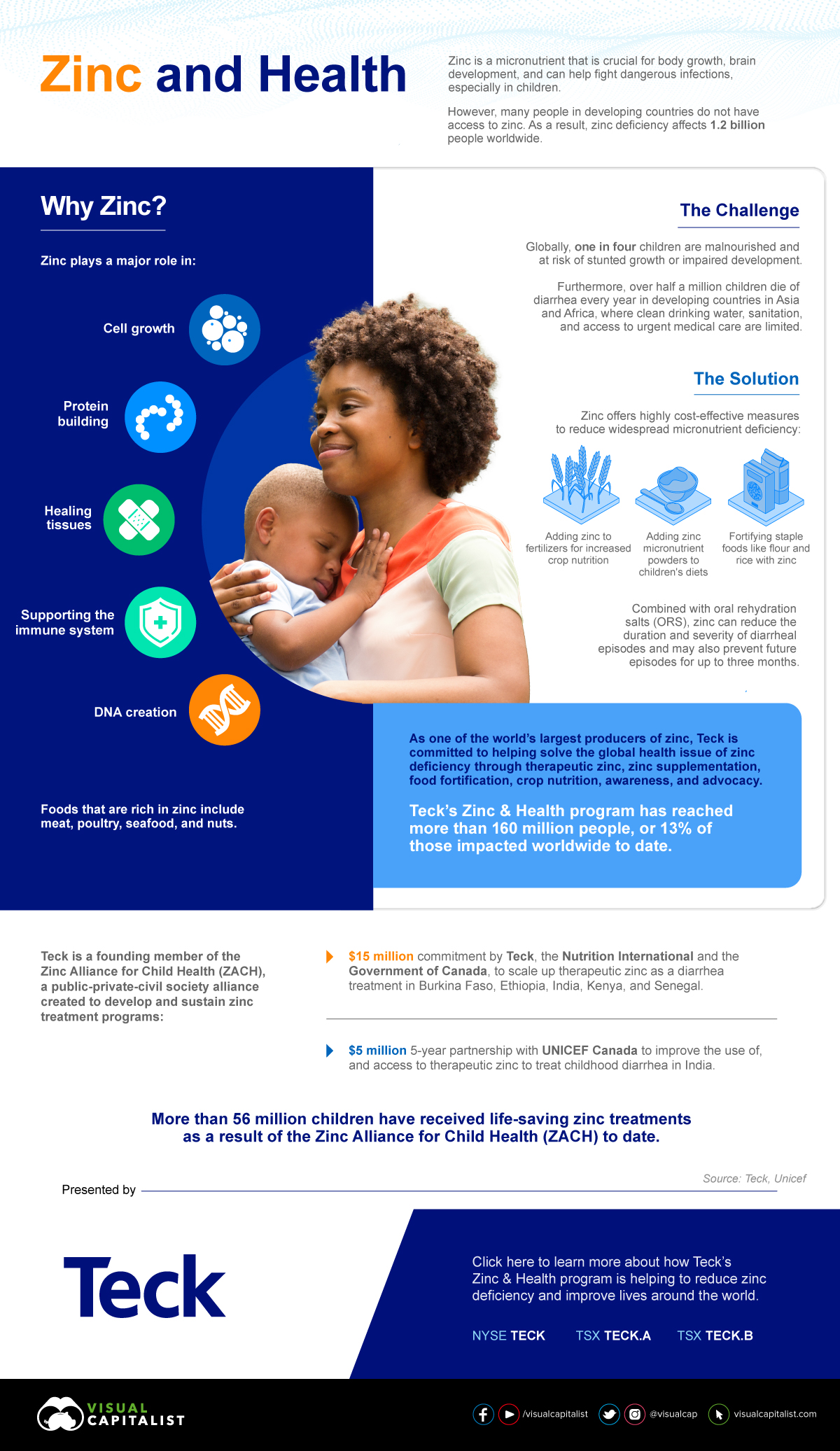A Brief Colonial History Of Ceylon(SriLanka)
Sri Lanka: One Island Two Nations
A Brief Colonial History Of Ceylon(SriLanka)
Sri Lanka: One Island Two Nations
(Full Story)
Search This Blog
Back to 500BC.
==========================
Thiranjala Weerasinghe sj.- One Island Two Nations
?????????????????????????????????????????????????Sunday, June 12, 2022
Zinc: A Life Saving Commodity
The following content is sponsored by the Teck

Zinc: A Life Saving Commodity
By Sponsored Content-
Zinc is crucial for body growth, brain development, and helps fight dangerous infections, especially in children.
However, the reality is that millions around the world lack sufficient zinc in their diets in order to live healthy lives.
This graphic, sponsored by Teck, shows how zinc supplementation could save millions of lives.
Why Zinc?
Zinc is a nutrient that plays many vital roles in human life. In fact, zinc is the second-most-abundant trace mineral in our bodies—after iron—and is present in every cell.
The mineral is required for numerous processes in the body, including:
- DNA creation
- Cell growth
- Protein building
- Healing tissues
- Supporting the immune system
Zinc is commonly added to some nasal sprays, lozenges, and other natural cold treatments.
The Challenge
Because the body doesn’t naturally produce zinc, we must obtain it through food or supplementation.
Fortunately, zinc is naturally found in a wide variety of both plant and animal foods, including meat, poultry, seafood, and nuts. We can also take zinc supplements or multi-vitamins which provide zinc. A diet that is too low in zinc however can cause several health issues.
Zinc deficiency affects 1.2 billion people worldwide today, according to UNICEF. In fact, one in four children are malnourished and at the risk of stunted growth and impaired development.
Furthermore, over half a million children die of diarrhea every year in developing countries in Asia and Africa, where clean drinking water, sanitation, and access to urgent medical care are limited.
The Solution
Combined with oral rehydration salts (ORS), zinc can reduce the duration and severity of diarrheal episodes and may also prevent future episodes for up to three months. Therapeutic zinc treatment costs less than $0.50 per patient.
In addition, zinc offers highly cost-effective measures to reduce widespread micronutrient deficiency by using the following strategies:
- Adding zinc to fertilizers for increased crop nutrition
- Adding zinc micronutrient powders to children’s diets
- Fortifying staple foods like flour and rice with zinc
The UN has labeled zinc a “life-saving commodity” due to the fact that increased access to zinc could prevent up to 200,000 childhood deaths annually.
Saving Children’s Lives
Teck is a founding member of the Zinc Alliance for Child Health (ZACH), a public-private-civil society alliance created to develop and sustain zinc treatment programs.
The first partnership under ZACH is a $15 million commitment by the miner, the Nutrition International, and the Government of Canada, aimed at scaling up therapeutic zinc and ORS as a diarrhea treatment in Burkina Faso, Ethiopia, India, Kenya, and Senegal.
They have also invested $5 million in a partnership with UNICEF Canada under ZACH to improve the use of and access to therapeutic zinc and ORS to treat childhood diarrhea in India.
The partnership aims to save the lives of more than 100,000 children by helping get zinc to those who need it most, and 50,000 lives annually going forward by strengthening healthcare systems in India.
To date, Teck’s Zinc and Health program has reached more than 160 million people or 13% of those impacted worldwide.
As one of the world’s largest producers of zinc, Teck is committed to helping solve the global health issue of zinc deficiency through therapeutic zinc, zinc supplementation, food fortification, crop nutrition, awareness, and advocacy.

%20(1)%20(1)%20(1).png)